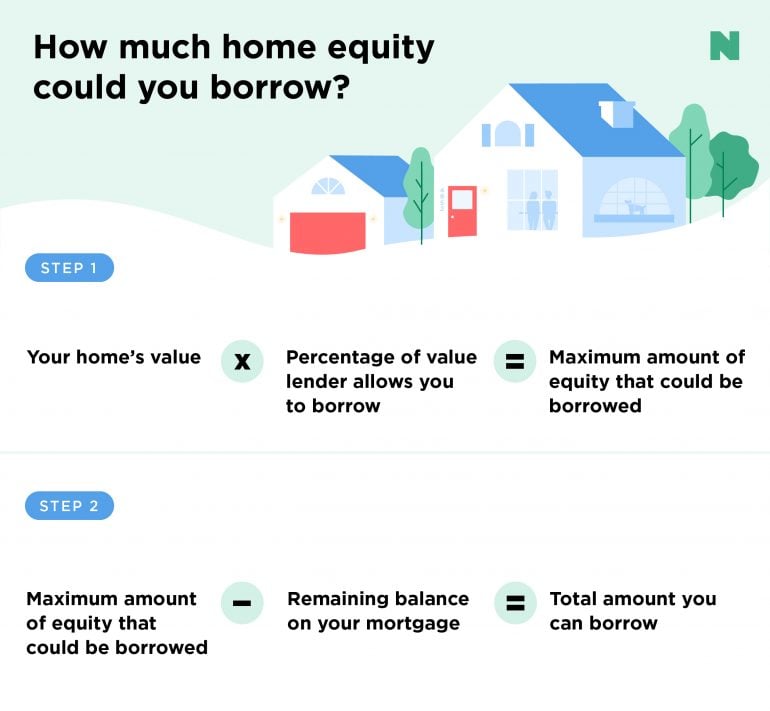Exactly How Home Equity Loan Can Financing Your Following Big Job
Exactly How Home Equity Loan Can Financing Your Following Big Job
Blog Article
Demystifying the Certification Process for an Equity Lending Authorization
Browsing the credentials process for an equity car loan approval can commonly seem like decoding an intricate challenge, with different aspects at play that establish one's eligibility. Comprehending the interaction in between debt-to-income ratios, loan-to-value proportions, and various other key standards is vital in protecting approval for an equity car loan.
Trick Eligibility Standard
To qualify for an equity loan authorization, conference certain essential qualification criteria is vital. Additionally, loan providers assess the applicant's debt-to-income proportion, with many choosing a ratio listed below 43%.
Moreover, lending institutions review the loan-to-value ratio, which contrasts the amount of the lending to the assessed value of the residential or commercial property. Meeting these crucial eligibility requirements increases the possibility of safeguarding approval for an equity loan.
Credit Rating Significance

Lenders commonly have minimal credit rating rating demands for equity fundings, with ratings over 700 normally considered excellent. By keeping an excellent credit rating rating through prompt expense payments, reduced credit utilization, and accountable borrowing, applicants can enhance their opportunities of equity car loan approval at competitive prices.

Debt-to-Income Proportion Analysis
Given the crucial function of credit scores in establishing equity funding authorization, an additional important element that loan providers assess is a candidate's debt-to-income proportion evaluation. A lower debt-to-income ratio shows that a customer has even more income readily available to cover their debt repayments, making them a much more eye-catching candidate for an equity funding.
Borrowers with a higher debt-to-income proportion may encounter difficulties in protecting approval for an equity loan, as it recommends a higher danger of skipping on the financing. It is essential for applicants to assess and potentially decrease their debt-to-income ratio prior to using for an equity lending to raise their opportunities of authorization.
Property Assessment Requirements
Examining the value of the home through a comprehensive appraisal is a fundamental action in the equity loan authorization process. Lenders need a property assessment to make sure that the home offers sufficient collateral for the loan quantity requested by the consumer. During the residential property evaluation, a licensed evaluator assesses numerous variables such as the residential property's condition, dimension, location, equivalent residential property values in the location, and any one-of-a-kind attributes that may influence its general well worth.
The home's evaluation worth plays an important duty in figuring out the optimum quantity of equity that can be borrowed against the home. Lenders commonly require that the appraised worth meets or surpasses a particular portion of the loan amount, referred to as the loan-to-value proportion. This proportion helps mitigate the lending institution's risk by ensuring that the building holds enough value to cover the financing in situation of default.
Ultimately, a complete residential or commercial property evaluation is crucial for both the consumer and the lender to properly analyze the residential property's worth and determine the feasibility of giving an equity financing. - Equity Loans
Comprehending Loan-to-Value Proportion
The loan-to-value ratio is a key economic metric made use of by lenders to examine the risk related to offering an equity loan based on the home's assessed value. This ratio is determined by separating the amount of the finance by the appraised worth of the property. For example, if a building is appraised at $200,000 and the funding quantity is $150,000, the loan-to-value ratio would be 75% ($ 150,000/$ 200,000)
Lenders utilize the loan-to-value proportion to determine the level of risk they are handling by providing a funding. A greater loan-to-value proportion indicates a higher danger for the loan provider, as the debtor has much less equity in the residential property. Lenders typically favor reduced loan-to-value ratios, as they give a pillow in instance the consumer defaults on the lending and the residential property needs to be sold to recover the funds.
Customers can likewise take advantage of a lower loan-to-value ratio, as it might cause better lending terms, such as reduced passion prices or minimized costs (Alpine Credits Home Equity Loans). Understanding the loan-to-value ratio is vital for both lending institutions and debtors in the equity financing authorization process
Verdict
In conclusion, the credentials process for an equity funding authorization read this is based on crucial qualification requirements, debt score relevance, debt-to-income ratio evaluation, residential or commercial property evaluation needs, and comprehending loan-to-value proportion. Understanding these aspects can help people browse the equity funding authorization process a lot more efficiently.
Comprehending the interaction between debt-to-income ratios, loan-to-value proportions, and other crucial standards is critical in protecting authorization for an equity car loan.Offered the critical function of debt scores in establishing equity lending authorization, an additional critical aspect that loan providers analyze is a candidate's debt-to-income proportion analysis - Alpine Credits. Borrowers with a higher debt-to-income ratio might encounter difficulties in safeguarding authorization for an equity lending, as it suggests a higher danger of failing on the car loan. It is necessary for candidates to assess and potentially minimize their debt-to-income proportion prior to using for an equity loan to increase their chances of authorization
In final thought, the credentials procedure for an equity financing authorization is based on crucial qualification standards, credit history rating value, debt-to-income proportion analysis, residential property assessment demands, and comprehending loan-to-value proportion.
Report this page